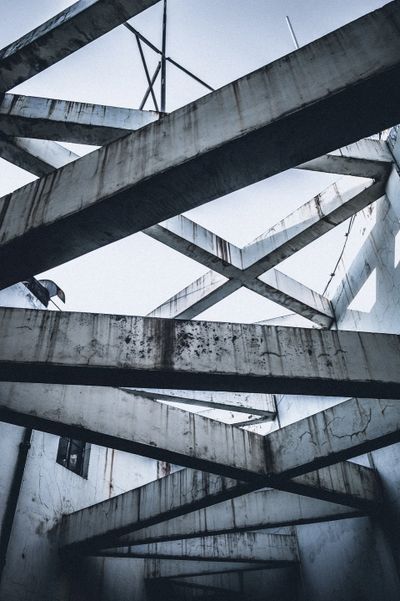Concrete remediation
What is Concrete cancer
Concrete cancer, or the deterioration of reinforced concrete, is a serious structural issue that can weaken buildings and pose safety risks. It is caused by a combination of factors that compromise the integrity of the concrete and the embedded steel reinforcement, making concrete remediation essential for maintaining structural health.
Causes of Concrete Cancer
Water Penetration:
Water seeping into the concrete reacts with the steel reinforcement, leading to rust formation and expansion.
Poor Waterproofing:
Inadequate waterproofing systems allow moisture to infiltrate the concrete.
Salt Air and Chlorides:
Structures near oceans, rivers, or other salt-laden environments are susceptible due to corrosive salt air and chlorides.
Building Defects:
Design flaws or construction defects can accelerate the onset of concrete cancer.
Weather Conditions:
Humid or rainy climates increase moisture exposure, contributing to deterioration.
Low-Quality Concrete:
Poor-quality materials reduce durability and make concrete more prone to damage.
Foundation Movement:
Shifting earth foundations create cracks that allow water and contaminants to penetrate the structure.
Signs of Concrete Cancer
Cracking or Flaking:
Visible cracks or sections of concrete breaking away from the surface.
Rust Stains:
Brownish streaks or stains on the surface, indicating rusting reinforcement beneath.
Drummy or Loose Render:
Rendered concrete that sounds hollow or is detaching when tapped.
Bubbling or Plating:
Raised or blister-like areas on concrete render, caused by trapped moisture.
Overhead Leaks:
Water seepage or dripping from overhead concrete surfaces.
Concrete cancer requires immediate attention to prevent further damage and ensure the safety and longevity of the structure. Recognizing the signs of concrete cancer early and employing effective concrete repair techniques is critical for successful remediation.

Concrete Repairs
Concrete Repair: Restoring Strength and Functionality
Concrete repair involves addressing issues with concrete surfaces that have lost their structural integrity, durability, or appearance. Timely concrete remediation can prevent further damage, restore functionality, and improve safety.
Common Signs of Concrete Cancer and Reasons for Concrete Repairs
Long-Term Damage: Exposure to water, ice, and environmental forces over time can weaken concrete.
Physical Impacts: Heavy loads, accidental impacts, or mechanical stress can lead to cracks or chips.
Surface Issues: Problems like scaling, spalling, or surface imperfections compromise the concrete's usability and appearance.
Benefits of Concrete Repairs
Restored Structural Integrity: Repairs ensure the concrete can support loads and resist further damage.
Improved Appearance: Cracks and defects are corrected, making surfaces look clean and well-maintained.
Original Profile Restoration: The repaired surface is leveled to match its original shape and function.
Enhanced Safety: Smoother, even surfaces reduce trip hazards and create a safer environment.
Concrete Repair Techniques
Concrete Patching: A mixture of cement, aggregate, and other materials is applied in layers to fill damaged areas and level the repaired section with the surrounding surface.
Concrete Repair Mortars: Designed to address defects in structural elements like buildings, bridges, and large slabs, these materials provide high-strength solutions for cracks and other damage.
Pore Sealers and Leveling Mortars: Used to fix minor defects such as honeycombing and surface pores, ensuring a smoother, more uniform surface.
Concrete repair is a versatile and effective solution for maintaining the functionality, safety, and aesthetics of concrete structures. Whether for minor fixes or significant restorations, employing the right concrete repair techniques ensures long-lasting results.

Concrete Repairs: Comprehensive Solutions for Structural Integrity
At Aussie, we have years of expertise and are your trusted partner for reliable and high-quality concrete remediation. Our team combines technical skill with the latest concrete repair techniques to restore the structural integrity, functionality, and appearance of your concrete surfaces. We take a tailored approach to each project, ensuring that our solutions address the specific challenges of your site while minimizing disruption to your operations.
Committed to excellence, safety, and durability, we use only premium materials and methods to deliver results that stand the test of time. By being vigilant for the signs of concrete cancer, we ensure that our concrete repairs prioritize precision, efficiency, and your complete satisfaction.
Aussie Demolition Co
This website uses cookies.
We use cookies to analyze website traffic and optimize your website experience. By accepting our use of cookies, your data will be aggregated with all other user data.
